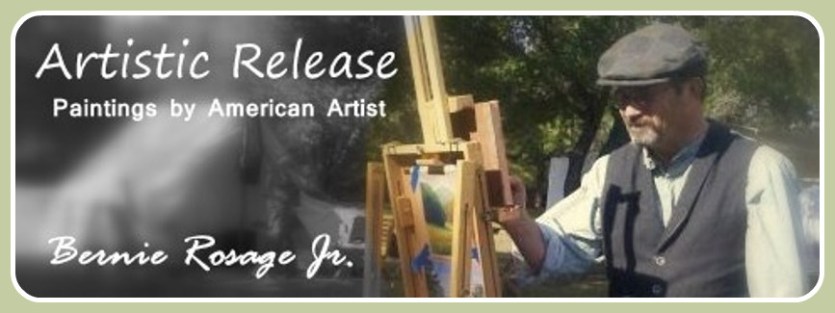“Life, Light, and Pigment”
June 5 - July 29, 2011
Baysden Gallery ~ Council for the Arts
826 New Bridge Street
Jacksonville, North Carolina 28540
910-455-9840
Opening Reception Sunday, June 5th, 2:30-4PM.
 |
| Bernie Rosage Jr. |
“Life, Light, and Pigment” is a collection of oil and acrylic paintings from the past two years by artist, Bernie Rosage Jr. Most of the 40 paintings in the exhibit were painted from life, either in the studio or on location en plein aire. “Painting from direct observation really hones the artist’s skills and develops the art of seeing”, states Rosage. The exhibit also shows how Rosages’ work has evolved over a two year span. “I have moved beyond just capturing what my subject looks like to something deeper”… “I am striving for the divine and sublime as I paint now”, added Rosage. Bringing everyday objects to life in fresh and artistic ways by capturing light, mood, and atmosphere are goals he is consciously and consistently achieving.
Bernie Rosage Jr. is a native of Onslow County, North Carolina, where he resides with his wife, Tami, their children and grandchildren. Bernie’s passion for art started at an early age and continues as a self taught artist. He likes the term "self motivated to be taught" as he works hard to fuel his passion of painting. His painterly approach to color and texture adds to his unique sense of style, best defined as Impressionistic Realism. His subjects are often personal and convey feelings of peace, serenity, and nostalgia. "I am drawn to country roads, marshlands, cottages, barns, trees, open fields, flowing rivers, etc... anything that eludes to a peaceful, calming feeling when viewed," states Rosage. His paintings are a wonderful culmination of sensitivity and skill and are collected throughout the United States, Ireland, Australia, and the United Kingdom.
http://www.bernierosage.com/













